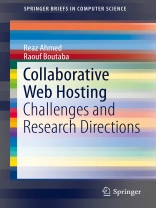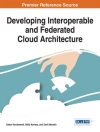This brief presents a peer-to-peer (P2P) web-hosting infrastructure (named p Web) that can transform networked, home-entertainment devices into lightweight collaborating Web servers for persistently storing and serving multimedia and web content. The issues addressed include ensuring content availability, Plexus routing and indexing, naming schemes, web ID, collaborative web search, network architecture and content indexing. In p Web, user-generated voluminous multimedia content i...
قائمة المحتويات
Introduction.- Plexus: Routing and Indexing.- Naming.- Collaborative Web Search.- Availability.- Conclusion.
قم بشراء هذا الكتاب الإلكتروني واحصل على كتاب آخر مجانًا!
لغة الإنجليزية ● شكل PDF ● صفحات 58 ● ISBN 9783319038070 ● حجم الملف 3.6 MB ● الناشر Springer International Publishing ● مدينة Cham ● بلد CH ● نشرت 2014 ● للتحميل 24 الشهور ● دقة EUR ● هوية شخصية 2923094 ● حماية النسخ DRM الاجتماعية












